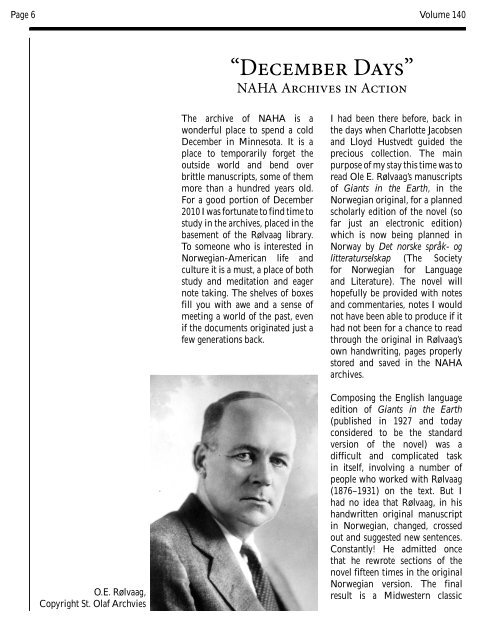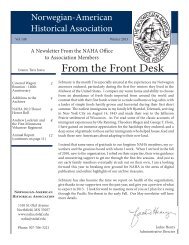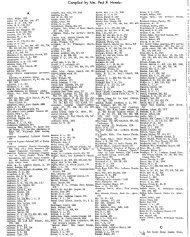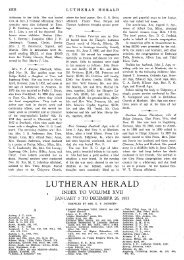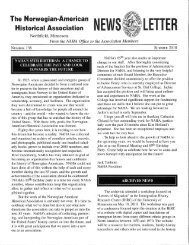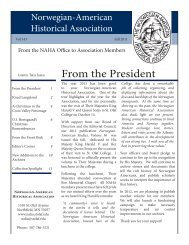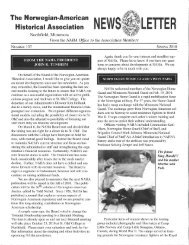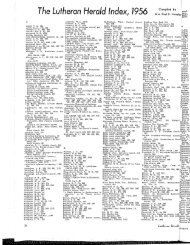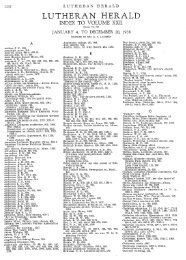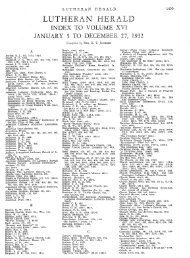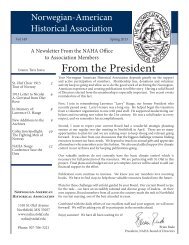Winter 2011 - Norwegian-American Historical Association - St. Olaf ...
Winter 2011 - Norwegian-American Historical Association - St. Olaf ...
Winter 2011 - Norwegian-American Historical Association - St. Olaf ...
Create successful ePaper yourself
Turn your PDF publications into a flip-book with our unique Google optimized e-Paper software.
Page 6 Volume 140“ D 2 O 2 Y N 2 ? D . F @ ”N A H A A ? O T U C 2 @ U ; A O A U < ;The archive of NAHA is awonderful place to spend a coldDecember in Minnesota. It is aplace to temporarily forget theoutside world and bend overbrittle manuscripts, some of themmore than a hundred years old.For a good portion of December2010 I was fortunate to find time tostudy in the archives, placed in thebasement of the Rølvaag library.To someone who is interested in<strong>Norwegian</strong>-<strong>American</strong> life andculture it is a must, a place of bothstudy and meditation and eagernote taking. The shelves of boxesfill you with awe and a sense ofmeeting a world of the past, evenif the documents originated just afew generations back.I had been there before, back inthe days when Charlotte Jacobsenand Lloyd Hustvedt guided theprecious collection. The mainpurpose of my stay this time was toread Ole E. Rølvaag’s manuscriptsof Giants in the Earth, in the<strong>Norwegian</strong> original, for a plannedscholarly edition of the novel (sofar just an electronic edition)which is now being planned inNorway by Det norske språk- oglitteraturselskap (The Societyfor <strong>Norwegian</strong> for Languageand Literature). The novel willhopefully be provided with notesand commentaries, notes I wouldnot have been able to produce if ithad not been for a chance to readthrough the original in Rølvaag’sown handwriting, pages properlystored and saved in the NAHAarchives.O.E. Rølvaag,Copyright <strong>St</strong>. <strong>Olaf</strong> ArchviesComposing the English languageedition of Giants in the Earth(published in 1927 and todayconsidered to be the standardversion of the novel) was adifficult and complicated taskin itself, involving a number ofpeople who worked with Rølvaag(1876–1931) on the text. But Ihad no idea that Rølvaag, in hishandwritten original manuscriptin <strong>Norwegian</strong>, changed, crossedout and suggested new sentences.Constantly! He admitted oncethat he rewrote sections of thenovel fifteen times in the original<strong>Norwegian</strong> version. The finalresult is a Midwestern classic


